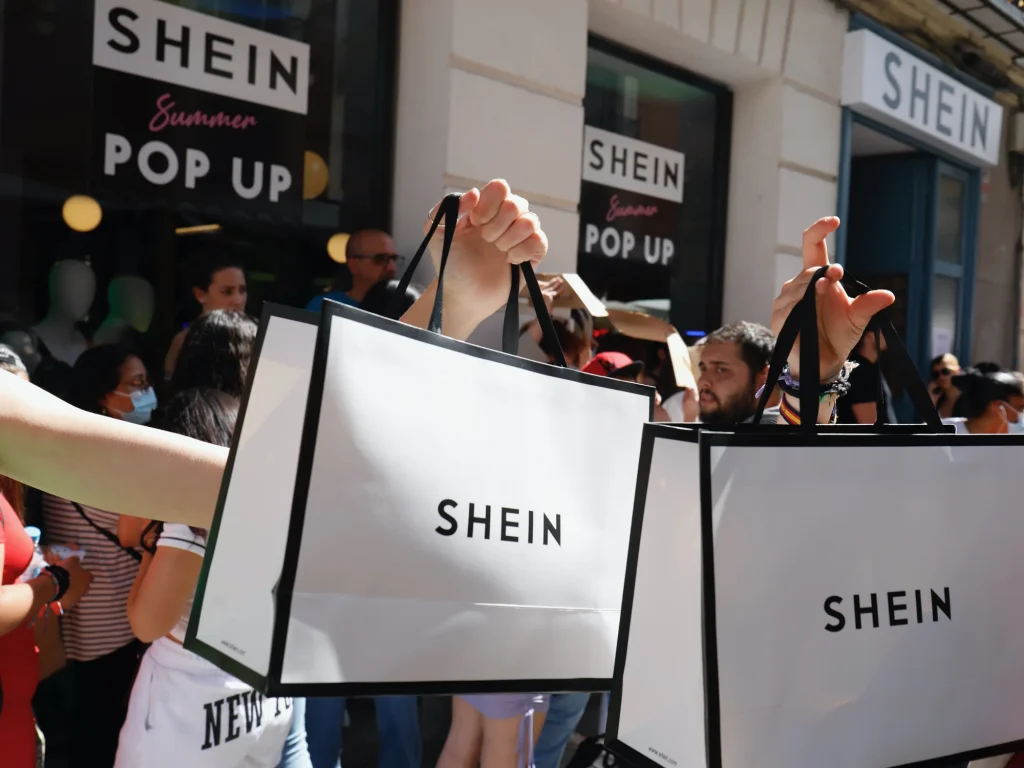Shein Clothing has become a household name in the global fashion industry, redefining how consumers shop for clothing online. Known for its low prices, vast product catalog, and hyper-speed production cycles, Shein has positioned itself as the leader of ultra-fast fashion. With billions in revenue, millions of active users, and dominance in the mobile shopping ecosystem, Shein has disrupted traditional fashion powerhouses like H&M, Zara, and ASOS.
But Shein’s success comes with both opportunities and controversies, ranging from regulatory scrutiny to environmental concerns.
Shein’s Explosive Growth & Market Dominance
-
Revenue Growth: Shein’s revenue climbed to $32.5 billion in 2023, a significant increase from $22.7 billion the year before. Projections suggest the company could surpass $50 billion in 2024 if growth continues.
-
User Engagement: The platform has over 88 million active shoppers worldwide and has become one of the most downloaded fashion apps, with 238 million app installs in 2023 alone.
-
Market Share in the U.S.: By late 2022, Shein controlled nearly 50% of the U.S. fast-fashion e-commerce market, surpassing major global brands.
This remarkable growth demonstrates Shein’s ability to combine agility, affordability, and trend responsiveness at a scale never seen before in fashion.
The Ultra-Fast Fashion Model
Shein doesn’t follow traditional fashion “seasons.” Instead, it launches thousands of new items every week, powered by AI-driven algorithms that predict consumer trends almost in real-time.
-
Comparison with Competitors: In one year, Zara launched approximately 6,800 items. Shein, in contrast, released over 315,000 new styles in the same period.
-
Production Efficiency: Its on-demand manufacturing allows Shein to produce small batches first, then scale production only for items that perform well. This minimizes risk while maximizing profitability.
This model has earned Shein the title of “The Amazon of Fashion,” offering everything from casual wear to formal outfits at a fraction of traditional retail prices.
Regional Expansion & Global Reach
United States & Europe
In the U.S., Shein became the go-to app for Gen Z shoppers, often dominating TikTok and Instagram feeds with haul videos. In the UK, Shein’s revenue grew by 32% in 2024, hitting over £2 billion, with pre-tax profits up by 56.6%. According to Business Insider’s coverage of Shein’s UK growth, the company made significant leaps ahead of its anticipated IPO, solidifying its dominance in the European fast-fashion market.
Africa & Emerging Markets
Shein has also gained traction in South Africa, where it accounts for nearly 28% of e-commerce apparel sales, a figure that continues to rise each year.
Asia & Beyond
Shein’s expansion strategy has included setting up local warehouses, logistics centers, and pop-up stores to boost its global presence and cut delivery times.
Marketing Strategy: Why Gen Z Loves Shein
Shein’s rapid rise is not just about affordable clothing—it’s also about marketing mastery.
-
Social Media Dominance: TikTok, Instagram, and YouTube are filled with Shein “haul” videos that drive viral engagement.
-
Influencer Collaborations: Thousands of micro and macro influencers promote Shein, boosting brand visibility at relatively low costs.
-
Gamified Shopping Experience: The Shein app offers daily rewards, interactive features, and discounts that keep users engaged and returning.
This digital-first marketing strategy has allowed Shein to bypass traditional advertising and create a direct emotional connection with younger consumers.
The Dark Side of Ultra-Fast Fashion
While Shein’s growth story is impressive, the brand faces serious challenges:
Environmental Impact
Shein produces clothing at an unprecedented rate, contributing to textile waste and carbon emissions. Reports estimate that the company’s operations released over 16.7 million metric tons of CO₂ in 2023.
Regulatory & Legal Issues
-
In the U.S., changes to trade laws, including the removal of duty-free “de minimis” exemptions, have raised Shein’s costs.
-
In the EU, Shein has been scrutinized for misleading discounts and labor-related controversies, especially concerning alleged use of cotton from Xinjiang.
Sustainability Concerns
With ultra-low prices, critics argue that Shein encourages a throwaway culture, where clothes are bought cheaply and discarded quickly.
The “Shein Effect” on Global Fashion
Shein has created what analysts now call the “Shein Effect”: a shift in global consumer behavior toward instant gratification, low-cost fashion, and digital-first retail. Traditional fashion brands are now forced to adapt by speeding up their supply chains and expanding online offerings.
This phenomenon also raises questions:
-
Can Shein sustain its growth under regulatory pressure?
-
Will consumers push for more eco-friendly practices?
-
Could Shein’s model inspire a new era of digitally native retailers worldwide?


